-
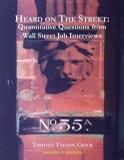
Heard on the Street
The book contains over 130 quantitative questions collected from actual investment banking, investment management, and options trading job interviews. The interviewers use the same questions year after year and here they are! These questions come from all types of interviews (corporate finance, sales and trading, quantitative research, etc), but they are especially likely in quantitative capital markets job interviews. The questions come from all levels of interviews (undergraduate, MBA, PhD), but they are especially likely if you have, or almost have, an MBA. The questions cover pure quantitative/logic, financial economics, derivatives, and statistics. Each quantitative question in the book is accompanied by a very detailed solution and by helpful advice. The latest edition also includes about 100 non-quantitative actual interview questions. Timothy Crack has a PhD from MIT. He has won many teaching awards and has publications in the top academic, practitioner, and teaching journals in finance. He has degrees in Mathematics/Statistics, Finance, and Financial Economics and a diploma in Accounting/Finance. Dr. Crack taught at the university level for 17 years including four years as a front line teaching assistant for MBA students at MIT. He now heads a quantitative active equity research team at the world's largest institutional money manager. -
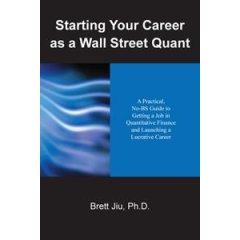
Starting Your Career as a Wall Street Quant
All Practical, No BS! Working in quantitative finance can be highly rewarding, in both intellectual and monetary terms (but especially the latter!). Quants-finance practitioners who develop and apply sophisticated mathematical and statistical models for asset pricing, trading and risk management-routinely make six figures, with the top ones raking in millions each year. Starting Your Career as a Wall Street Quant is the first and only career guide specifically written for readers who want to get into quantitative finance and launch a lucrative career. It covers everything you wanted to know about getting a quant job, from writing an effective resume to acing job interviews to negotiating the job offer. Written by a practicing senior quant and packed with practical, useful tips (and devoid of BS that would get you nowhere), this book will help you get the quant job you want. Want to know what the single most critical element of your resume is? Want to know how to impress any interviewer as well as what to say and what not to say at a job interview? Want to know which books to study to acquire the right kind of quantitative education, the kind relevant to finance, and to gain an edge over your competitors? You'll find the answers to these questions, and many more, in this insider's guide. From the Author As a working quant, I've been to both sides of the job search process: I've been to many job interviews where I found my palms sweating wet all day long, and I've also been on the other side of the desk interviewing candidates whose palms were probably sweating wet. In writing this book, my goal is to offer you practical information and advice that can prove valuable in your quest to get a quant job on Wall Street. I call this book a "practical, no-BS guide" because that's what it is: lots of practical information you can use right away. I don't BS. I won't be selling you anything, and I don't have a hidden agenda like someone who is a professional headhunter might. I simply want to help you and others who are looking to start a quant career. It's that simple. (BTW, BS here does not stand for Black-Scholes!) You are welcome to visit the blog at http://quantcareer.spaces.live.com and try those quant questions on your own. -

Quantitative Equity Portfolio Management
Praise for Quantitative Equity Portfolio Management "A must-have reference for any equity portfolio manager or MBA student, this book is a comprehensive guide to all aspects of equity portfolio management, from factor models to tax management." ERIC ROSENFELD, Principal & Co-founder of JWM Partners "This is an ambitious book that both develops the broad range of artillery employed in quantitative equity investment management and provides the reader with a host of relevant practical examples. The book excels in melding theory with practice." STEPHEN A. ROSS, Franco Modigliani Professor of Financial Economics, Massachusetts Institute of Technology "The book is very comprehensive in its coverage, detailed in its discussions and written from a practical perspective without sacrificing needed rigor." DAVID BLITZER, Managing Director and Chairman, Standard & Poor's Index Committee "Making the transition from the walls of academia to Wall Street has traditionally been a difficult task!This book provides this link in a successful and engaging fashion, giving students of finance a road map for the application of financial theories in a real-world setting." MARK HOLOWESKO, CEO and Founder, Templeton Capital Advisors "This text provides an excellent synthesis of a broad range of quantitative portfolio management methods!In addition, there are a number of insightful innovations that extend and improve current techniques." DAN DIBARTOLOMEO, President and Founder, Northfield Information Services, Inc. Capitalize on Today's Most Powerful Quantitative Methods to Construct and Manage a High-Performance Equity Portfolio Quantitative Equity Portfolio Management is a comprehensive guide to the entire process of constructing and managing a high-yield quantitative equity portfolio. This detailed handbook begins with the basic principles of quantitative active management and then clearly outlines how to build an equity portfolio using those powerful concepts. Financial experts Ludwig Chincarini and Daehwan Kim provide clear explanations of topics ranging from basic models, factors and factor choice, and stock screening and ranking!to fundamental factor models, economic factor models, and forecasting factor premiums and exposures. Readers will also find step-by-step coverage of portfolio weights! rebalancing and transaction costs!tax management!leverage! market neutral!Bayesian _!performance measurement and attribution!the back testing process!and portfolio performance. Filled with proven investment strategies and tools for developing new ones, Quantitative Equity Portfolio Management features: A complete, easy-to-apply methodology for creating an equity portfolio that maximizes returns and minimizes risks The latest techniques for building optimization into a professionally managed portfolio An accompanying CD with a wide range of practical exercises and solutions using actual historical stock data An excellent melding of financial theory with real-world practice A wealth of down-to-earth financial examples and case studies Each chapter of this all-in-one portfolio management resource contains an appendix with valuable figures, tables, equations, mathematical solutions, and formulas. In addition, the book as a whole has appendices covering a brief history of financial theory, fundamental models of stock returns, a basic review of mathematical and statistical concepts, an entertaining explanation and quantitative approach to the casino game of craps, and other on-target supplemental materials. An essential reference for professional money managers and students taking advanced investment courses, Quantitative Equity Portfolio Management offers a full array of methods for effectively developing high-performance equity portfolios that deliver lucrative returns for clients. About the Authors Ludwig B. Chincarini, Ph.D., CFA, is a professor of finance at Georgetown University as well as a financial consultant to institutional investors. Previously, he was director of research at Rydex Global Advisors, the index mutual fund company. Prior to that, Dr. Chincarini was director of research at FOLIOfn, a brokerage firm that pioneered basket trading. He also worked at the Bank for International Settlements and holds a Ph.D. in economics from the Massachusetts Institute of Technology. Daehwan Kim, Ph.D., is a professor of economics at the American University in Bulgaria. Previously, he was employed as a financial economist for FOLIOfn. Dr. Kim also worked as a financial journalist, writing regular columns on financial markets for business media in Asia. He also holds a Ph.D. in economics from Harvard University. -
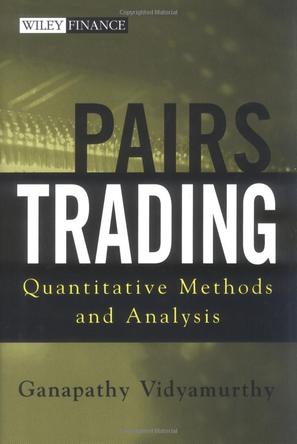
Pairs Trading
The first in-depth analysis of pairs trading Pairs trading is a market-neutral strategy in its most simple form. The strategy involves being long (or bullish) one asset and short (or bearish) another. If properly performed, the investor will gain if the market rises or falls. Pairs Trading reveals the secrets of this rigorous quantitative analysis program to provide individuals and investment houses with the tools they need to successfully implement and profit from this proven trading methodology. Pairs Trading contains specific and tested formulas for identifying and investing in pairs, and answers important questions such as what ratio should be used to construct the pairs properly. -
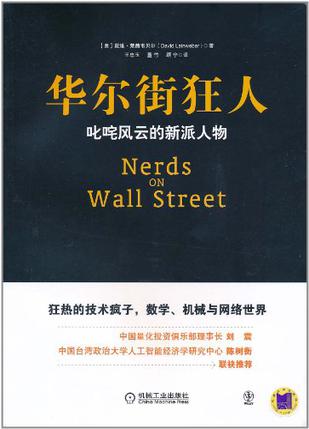
华尔街狂人
《华尔街狂人》讲述的是发生在当今世界金融市场中日新月异的技术变革的故事。技术对于投资行业的影响意义深远,作者戴维·莱茵韦贝尔为读者展现了华尔街的过去和未来走向。要成为一位长期成功的投资人,并非只与股票的选择、资产的分配或是对市场时机的把握有关,它还与技术相关。 从根本上,金融业的游戏规则已经变了,由于技术的发展,这种变化还将继续进行。新加入的“玩家”在给投资人提供机遇的同时也带来了风险。通过这本趣味性极强的书,戴维·莱茵韦贝尔分?并阐述技术在哪些方面已经深入融合到了华尔街,这意味着什么,以及这对未来的市场会有何种影响。 -
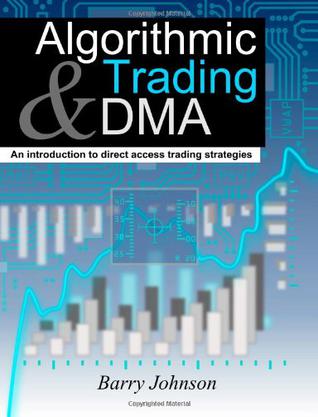
Algorithmic Trading and DMA
Algorithmic trading and Direct Market Access (DMA) are important tools helping both buy and sell-side traders to achieve best execution. This book starts from the ground up to provide detailed explanations of both these techniques: - An introduction to the different types of execution is followed by a review of market microstructure theory. Throughout the book examples from empirical studies bridge the gap between the theory and practice of trading. - Orders are the fundamental building blocks for any strategy. Market, limit, stop, hidden, iceberg, peg, routed and immediate-or-cancel orders are all described with illustrated examples. - Trading algorithms are explained and compared using charts to show potential trading patterns. TWAP, VWAP, Percent of Volume, Minimal Impact, Implementation Shortfall, Adaptive Shortfall, Market On Close and Pairs trading algorithms are all covered, together with common variations. - Transaction costs can have a significant effect on investment returns. An in-depth example shows how these may be broken down into constituents such as market impact, timing risk, spread and opportunity cost and other fees. - Coverage includes all the major asset classes, from equities to fixed income, foreign exchange and derivatives. Detailed overviews for each of the world's major markets are provided in the appendices. - Order placement and execution tactics are covered in more detail, as well as potential enhancements (such as short-term forecasts), for those interested in the specifics of implementing these strategies. - Cutting edge applications such as portfolio and multi-asset trading are also considered, as are handling news and data mining/artificial intelligence.